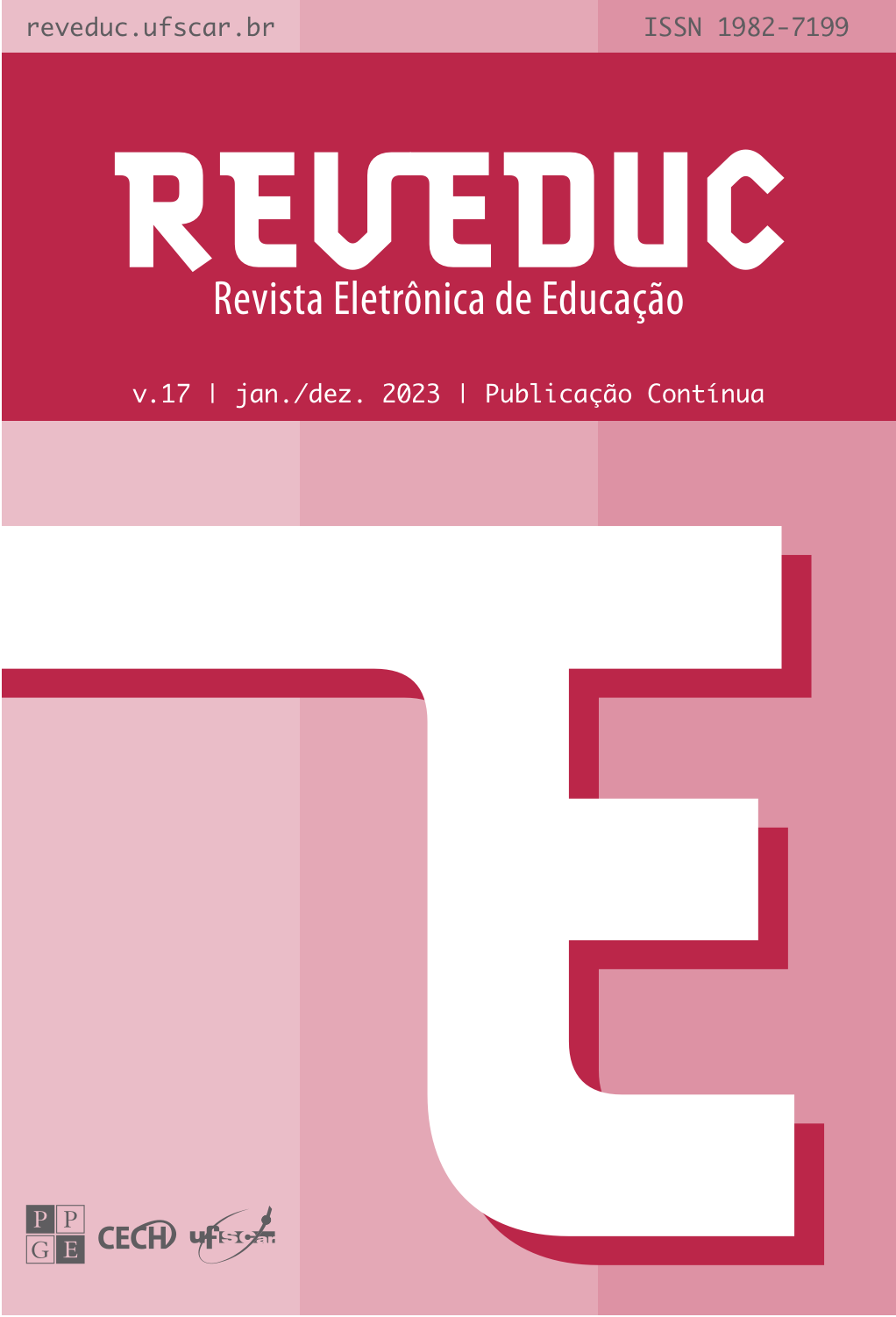O Desenvolvimento da Linguagem Escrita da Criança: implicações pedagógicas da teoria histórico-cultural
DOI:
https://doi.org/10.14244/198271993961Palavras-chave:
Linguagem escrita, Primeiro ciclo do ensino fundamental, Teoria histórico-Cultural.Resumo
Este ensaio resulta de uma reflexão teórica de uma pesquisa de doutorado. O objetivo é o exercício de reflexão, a partir da Teoria Histórico-Cultural, sobre os princípios teóricos e metodológicos que podem favorecer o desenvolvimento da linguagem escrita da criança no contexto da Educação Infantil e do Ensino Fundamental, em contraposição a uma concepção de escrita como técnica, cuja apropriação dependeria de exercícios práticos e sem o estabelecimento de uma situação comunicativa significativa para a criança. A partir de uma revisão dos principais conceitos de Vigotski (1997c), Luria (2006) e de outros autores em relação à formação e ao desenvolvimento da linguagem escrita como sendo uma função psíquica humana, compreende-se a linguagem escrita como uma atividade cultural e simbólica, cujo processo de apropriação acontece desde a primeira infância. Conclui-se que as diferentes maneiras utilizadas pela criança pequena para atribuir sentido ao mundo – o gesto indicativo, o jogo de papéis sociais e o desenho como instrumento – contribuem para desenvolver a capacidade gráfica para expressar, a qual se torna cada vez mais sofisticada à medida que a criança se apropria dos signos escritos, com base em indícios visuais, e da atividade de linguagem realizada por meio deles em atividades educativas intencionalmente planejadas para atingir esse objetivo, favorecendo o pleno desenvolvimento de crianças autoras e leitoras de textos.
Métricas
Referências
ARENA, D. B.; ARENA, A. P. B.; SANTOS, S. O. Escolhas de letras nas primeiras escritas infantis: função e unidade no discurso. Ensino em Re-Vista, Uberlândia, v. 18, n. 1, p. 67-80, 2011. Disponível em: http://www.seer.ufu.br/index.php/emrevista/article/view/12365. Acesso em: 1 jan. 2020.
BAJARD, É. Manifesto dos usuários da escrita. Ensino em Re-Vista, Uberlândia, v. 21, n. 1, p. 189-195, 2014. Disponível em: http://www.seer.ufu.br/index.php/emrevista/article/view/25061. Acesso em: 27 dez. 2019.
BAJARD, É. O signo gráfico, chave da aprendizagem da escrita. Ensino em Re-Vista, Uberlândia, v. 23, n. 1, p. 201-225, 2016. Disponível em: http://www.seer.ufu.br/index.php/emrevista/article/view/35412. Acesso em: 29 jan. 2020.
BORTOLANZA, A. M. E.; FREIRE, R. J. Entre significar e decifrar a escrita: a alfabetização de Ivo. FAEEBA, Salvador, v. 28, n. 54, p. 139-154, 2019. Disponível em: https://www.revistas.uneb.br/index.php/faeeba/article/view/6186. Acesso em: 15 jan. 2020.
CORRÊA, A. B. Textos manuscritos e digitais: apropriação da escrita por crianças de 3º ano do ensino fundamental. 2017. Dissertação (Mestrado em Educação) – Universidade de Uberaba, Uberaba, 2017. Disponível em: https://uniube.br/cpe/biblioteca/dissertacoes.php. Acesso em: 15 jul. 2023.
CORRÊA, A. B.; BORTOLANZA, A. M. E. Desenvolvimento humano e o papel do signo na constituição da linguagem verbal, da fala e da consciência humana: pressupostos de Vigotski, Leontiev e Luria. Eutomia, Recife, v. 1, n. 21, p. 97-119, 2018. Disponível em: https://periodicos.ufpe.br/revistas/EUTOMIA/article/view/237442. Acesso em: 15 jul. 2023.
LIMA, E. A. de. Trabalho pedagógico na educação infantil: em busca da atitude ativa de professores e crianças. In: MENDONÇA, S. G. de L.; PENITENTE, L. A. A.; MILLER, S. (Org.). A questão do método e a teoría histórico-cultural: bases teóricas e implicações pedagógicas. São Paulo: Cultura Acadêmica, 2017. p. 113-129.
LUGLE, A. M. C.; MELLO, S. Produção de sentido para a linguagem escrita e formação da atitude leitora/autora. Revista de Educação, Campinas, v. 20, n. 3, p. 187-199, 2015. Disponível em: https://periodicos.puc-campinas.edu.br/reveducacao/article/view/2901. Acesso em: 03 dez. 2019.
LURIA, A. R. Memória. In: LURIA, A. R. Curso de psicologia geral. Rio de Janeiro: Civilização Brasileira, 1979, 3 v., p. 39-96.
LURIA, A. R. O desenvolvimento da escrita na criança. In: VIGOTSKI, L. S.; LURIA, A. R.; LEONTIEV, A. N. Linguagem, desenvolvimento e aprendizagem. São Paulo: Ícone, 2006, p. 143-189.
VIGOTSKI, L. S. El problema de la edad. In: VIGOTSKI, L. S. Obras escogidas. 2. ed. Madrid: Visor, 1997a, 4 v., p. 251-273.
VIGOTSKI, L. S. El problema del desarrollo de las funciones psíquicas superiores. In: VIGOTSKI, L. S. Obras escogidas. 2. ed. Madrid: Visor, 1997b, 3 v., p. 11-46.
VIGOTSKI, L. S. La prehistoria del desarrollo del lenguaje escrito. In: VIGOTSKI, L. S. Obras Escogidas. 2. ed. Madrid: Visor, 1997c, 3 v., p. 183-206.
VIGOTSKI, L. S. Pensamento e palavra. In: VIGOTSKI, L. S. A construção do pensamento e da linguagem. 2. ed. São Paulo: WMF Martins Fontes, 2009. p. 395-486.
Downloads
Publicado
Como Citar
Edição
Seção
Licença
Licença CC-BY-NC
(Atribuição Não Comercial)
Essa licença permite, exceto onde está identificado, que o usuário final remixe, adapte e crie a partir do seu trabalho para fins não comerciais, sob a condição de atribuir o devido crédito e da forma especificada pelo autor ou licenciante.
##plugins.generic.dates.accepted## 2023-05-23
##plugins.generic.dates.published## 2023-10-31






